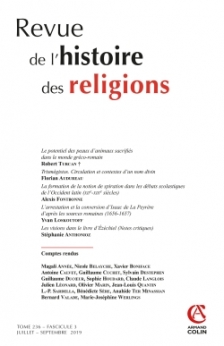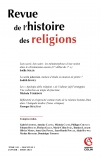
Revue de l'histoire des religions (3/2019)
Pour acheter ce numéro, contactez-nous
Recevez les numéros de l'année en cours et accédez à l'intégralité des articles en ligne.
Le calviniste Isaac de La Peyrère est arrêté à Bruxelles en 1656 pour ses Praedamitae (1655) où il expose l’hérésie d’une humanité antérieure à Adam. Il est libéré sous condition d’aller se convertir à Rome, ce qu’il fait en 1657. En se fondant sur des documents romains récemment signalés (Archives du Vatican, du Saint-Office, de la Propagande de la foi) ou ignorés (Bibliothèque Vaticane), cet article reconstitue l’arrestation, la conversion et la publication qui s’ensuivit. Il révèle de nombreux acteurs souvent inconnus, tels les frères Chifflet, le secrétaire Nypho, l’internonce à Bruxelles De Vecchi, le nonce à Venise Caraffa, le préfet de la Bibliothèque Vaticane Holstenius (lui aussi converti), les jésuites Bergier, Schega, Duneau, Fabri, les cardinaux Barberini et Albizzi, le pape Alexandre VII lui-même.
The Protestant Isaac de La Peyrère was arrested in Brussels in 1656 for his Praedamitae (1655), which hold the heresy that human beings existed before Adam. He was freed under the condition that he would go to Rome and convert there, which was done in 1657. This article studies the arrest, the conversion and the book that followed, using Roman documents recently signaled (Archives of the Vatican, Sant’Uffizio and Propaganda fide) or ignored (Vatican Library). It reveals numerous actors in these events, often unknown, such as the Chifflet brothers, the secretary Nypho, the internuncio De Vecchi in Brussels, the nuncio Caraffa in Venice, the prefect of the Vatican Library, Holstenius (also a convert), the Jesuits Bergier, Schega, Duneau, Fabri, cardinals Barberini and Albizzi, and Pope Alexander VII himself.

